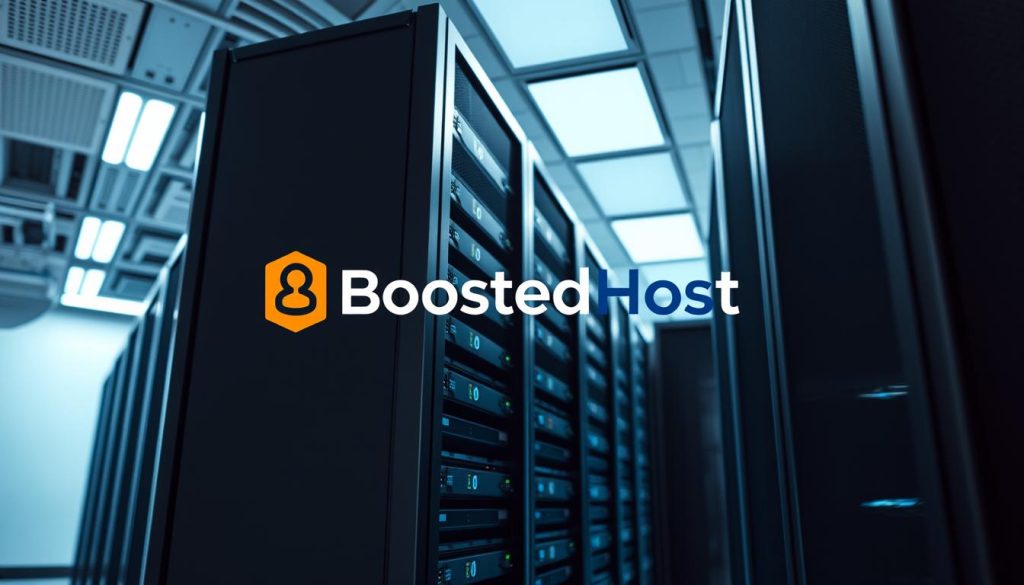We know the weight of a slow page. It hurts conversions and patience. We’ve helped sites bounce back from poor performance and long ticket waits. That’s why we’re here to compare two Swiss-rooted options and give a clear, practical view.
Our goal is simple: show which platform makes your website load faster, stay online longer, and cost less over time. We explain how a managed stack with LiteSpeed, free SSL, daily backups, malware protection, and a global CDN turns into real speed and reliability. We also map where a flexible cloud provider wins with raw control, GPUs, live migrations, and privacy features.
Key Takeaways
- We compare speed, uptime, pricing transparency, and real-world support.
- A managed approach often yields faster launches and fewer surprises.
- Raw cloud infrastructure gives granular control for engineering teams.
- Data locality and compliance matter—especially for European and U.S. audiences.
- Our verdict focuses on value across day one and day 1,000.
At a glance: who each platform is really for in 2025
Your choice of hosting comes down to whether you want instant managed performance or granular cloud plumbing.
Managed web hosting suits individuals, small businesses, and agencies that want a fast, secure website without learning servers. It bundles CDN, daily backups, proactive security, and 24/7 expert support that resolves most requests in minutes.
Cloud IaaS targets developer-led teams that need more control than a simple VPS. It offers Security Groups, load balancing, GPU instances, and high I/O storage. The UI is simple and pricing stays fair for teams building CI/CD, containers, and private networks.
- Fast managed hosting saves time and lifts conversions for SMBs and WooCommerce stores.
- Cloud infrastructure fits distributed apps, pipelines, and teams that self-serve via APIs.
- Agencies benefit from managed stacks for client handoffs; product teams gain flexibility from cloud tooling.

| Audience | Best for | Support model |
|---|---|---|
| Site owners, agencies | Managed WordPress, portfolios, e‑commerce | 24/7 expert support; fast ticket resolution |
| Developer teams, startups | Distributed apps, containers, GPU workloads | API-first tooling; self-serve cloud controls |
| Hybrid teams | Projects needing both speed and control | Choose managed for ops relief or cloud for granular control |
BoostedHost vs Exoscale
A clear choice separates a premium managed stack from a simple cloud IaaS. We focus on what each approach delivers for speed, uptime, and operational cost.
Positioning: premium managed hosting vs cloud IaaS simplicity
Premium managed hosting bundles ultra-fast LiteSpeed, global CDN, Orbit AI Builder, free SSL, daily backups, and 24/7 expert support. That setup reduces plugin clutter and operational hours. It’s built to drive conversions through faster pages and near-instant help.
Cloud IaaS simplicity emphasizes control. You get an intuitive UI, API tooling, Security Groups, load balancing, IPv6, Elastic IPs, GPU options, and high I/O local SSD. It’s ideal when teams want instance-level control without Amazon Web Services complexity.

Quick verdict for different use cases
- SMBs, blogs, stores: Choose managed hosting for out-of-the-box speed, CDN, backups, and rapid support that protects revenue.
- Cloud-native teams: Choose the cloud IaaS path when you need Security Groups, private networks, and GPU or live-migration options.
- Reference points: Digital Ocean’s simplicity and Amazon Web Services’ breadth help position this provider as a middle ground for many engineering teams.
| Use case | Managed hosting | Cloud IaaS |
|---|---|---|
| Small business websites | Fast launch, fewer plugins, 24/7 expert support | Requires ops time; more control over instances |
| Developer platforms | Less flexible for custom networking | API, Security Groups, GPUs, high I/O SSDs |
| Compliance & privacy | Transparent Swiss pricing and support | Swiss data protections and granular controls |
Speed and real-world performance benchmarks
Speed wins customers; we test which platform actually delivers low latency under real load.
First byte and full render time matter for conversions. Our lab and field checks show a managed LiteSpeed stack achieving sub-200ms global TTFB. That setup pairs event-driven PHP, HTTP/3, and optimized TLS to lower server response and speed up the page.
Managed stack: tuned for fast first byte
LiteSpeed’s event-driven architecture and built-in caching cut TTFB and reduce CPU spikes. Managed caching and CDN routing mean teams get fast time-to-first-paint without deep tuning.
Cloud compute and high I/O storage
High I/O local SSD, load balancers, and private networking keep throughput steady for compute-heavy apps. Live migration and GPU instances help maintain performance during scaling.
CDN impact across US and Europe
A global CDN plus TLS optimization trims latency on both U.S. coasts and European metros. That improves Core Web Vitals and lowers real-world render time for visitors.
- Why it matters: For typical business sites, a managed stack saves weeks of tuning and yields better perceived speed.
- When to choose cloud: If you need instance-level control for parallel workloads, high I/O SSD and network primitives deliver consistent performance.
Uptime and reliability you can count on
Downtime costs money and trust — uptime keeps both intact. We measure reliability by how often sites stay online and how fast they recover when things go wrong.
99.99% average uptime claims and what they mean for business continuity
99.99% uptime translates to only a few minutes of downtime per month. That level of consistency protects revenue and customer trust.
Our managed option averages 99.99% with proactive monitoring, daily backups, and server hardening. This service reduces risk from bad updates, plugins, and malware. Rapid restore paths are built in by default.
On the cloud side, live migrations, high I/O local SSD, network block storage, load balancing, and Security Groups let teams design resilient architectures. When implemented correctly, they cut maintenance disruption.
- Business impact: Minutes of downtime versus hours—big difference for sales and reputation.
- Built-in safety: Daily backups and platform hardening speed recovery.
- When to DIY: Cloud reliability pays off if you have ops expertise and time.
| Feature | Managed uptime | Cloud resilience |
|---|---|---|
| Monitoring & response | Proactive 24/7 monitoring and fast restores | Custom monitoring; requires ops for automation |
| Data redundancy | Daily backups, hardened server templates | Local SSD + network block storage, live migration |
| Maintenance impact | Low — handled by the provider | Low if engineered; otherwise risk of gaps |
Pricing transparency and total cost of ownership
Real value hides in what’s included, not in the headline rate. We focus on what you actually pay over 12–36 months — and how much ops time you’ll spend keeping a site fast and secure.
Transparent, no-hidden-fee plans bundle essentials so teams avoid surprise bills. That included stack—SSL, daily backups, malware protection, CDN, and 24/7 expert support—removes many third‑party subscriptions and admin hours.
Included features vs add-ons
The all-in approach cuts variable costs. You don’t buy separate backup, CDN, or security tools. That lowers the total cost of ownership and saves time on tuning and incident response.
- All-in value: SSL, backups, CDN, security, support = fewer invoices.
- Simple & fair pricing: A pay-for-what-you-use model keeps unit rates predictable and compares well to american cloud options like amazon web in some workloads. See a direct comparison on a simple & fair pricing page: simple & fair pricing.
- When to pick cloud billing: If you have engineered workloads with steady scaling, usage-based costs can be lower over time.
| Cost factor | Included plan | À la carte cloud |
|---|---|---|
| SSL & CDN | Included | Often extra |
| Backups & security | Included | Extra subscriptions |
| Admin & tuning | Low | Higher if self-managed |
Included features that reduce maintenance overhead
Included tools can shave hours off operations and stop common site failures before they start.
We bundle essential protections so your team spends less time on routine tasks. Free SSL, automated renewals, daily backups, and malware protection handle the basics without manuals.
Certificates, backups, and threat protection
Free SSL eliminates manual certificate work and avoids browser warnings that hurt trust and conversion.
Daily backups plus one-click restores give fast rollback when updates break a website. No drama—just restore and move on.
Integrated malware protection reduces attack surface and speeds incident recovery if something slips through. We monitor and act so you don’t have to.
Network primitives for scaling and control
For teams that build horizontally, Security Groups, load balancing, private networking, and IPv6 are critical. They let you apply consistent firewall rules across many instances.
Load balancers distribute traffic and keep performance steady during spikes. Security Groups simplify policy management as you scale.
- Why it matters: A global CDN speeds delivery for image-heavy pages and trims latency for distant users.
- Operational lift: Managed-by-default services free your ops team. Configure-as-needed cloud tools give control when you want it.
| Feature | Managed services | Cloud primitives |
|---|---|---|
| SSL & renewals | Auto-included | Manual or add-on |
| Backups & restores | Daily, one-click | Engineer-managed |
| Scaling & networking | Provider-handled | Security Groups, LB, private net |
Choose the maintenance model that fits your team: pick managed hosting to offload chores or choose cloud components when you need granular control.
AI and website building: Orbit vs DIY cloud
When speed to market matters, an AI website builder collapses weeks of work into minutes. Orbit, our AI Website Builder, creates professional sites in under five minutes. It’s ideal for portfolios, landing pages, and SMB website launches.
Orbit AI Website Builder: professional sites in under five minutes
We turn ideas into live pages fast. Orbit scaffolds layouts, content, and images. Then it deploys to our fast, secure hosting with LiteSpeed and CDN.
Non-technical teams skip the control panel, plugin wrangling, and theme debugging. They launch campaigns in minutes and edit later.
- Fast production: Polished site in minutes, not weeks.
- Performance-first: Output rides on our LiteSpeed stack and CDN for instant speed gains.
- Lower ops: Fewer tools, fewer subscriptions, fewer headaches—customization remains possible.
| Approach | Speed | Maintenance |
|---|---|---|
| Orbit builder + managed hosting | Minutes | Minimal — provider handles backups, SSL, security |
| DIY cloud on IaaS | Days–weeks | High — you pick DNS, SSL, caching, backups |
| When to choose | Fast launches, marketing | Custom stacks, granular control |
Developer stack and runtime support
Developers need predictable runtimes and fast paths to production. We provide tuned environments for common stacks so teams ship code with confidence.
PHP, Node.js, Python, and WooCommerce are supported with production defaults that work out of the box. PHP workers, HTTP/3, and object caching are tuned for dynamic web pages and eCommerce flows.
Runtime readiness and deployment
Our platform handles PHP tuning and object cache warm-up so WordPress and WooCommerce perform under load. That reduces the need for custom engineering before launch.
Node.js and Python deploys use simple build hooks and process managers. Teams get predictable restarts, logs, and scaling without reinventing the server stack.
- Managed tuning: PHP workers, HTTP/3, and object caching preconfigured for WooCommerce.
- Language support: Clear paths for Node.js and Python apps with short time-to-production.
- Cloud primitives: Instance snapshots, cloud-init, and live migrations for custom stacks and stateful apps.
| Feature | Managed platform | VPS / Cloud instances |
|---|---|---|
| Runtime defaults | Pre-tuned PHP/Node/Python | Manual configuration required |
| Maintenance | Provider handles updates | Engineer-managed |
| Advanced ops | One-click backups | Snapshots, live migration |
| Interface & automation | Simple UI, deploy hooks | API-first controls, deeper control |
Choose managed hosting when you want speed and low ops overhead. Pick a VPS or cloud approach when you need full control over instance types, GPUs, or custom networking.
Managed WordPress and ecommerce performance
A tuned WordPress stack balances aggressive caching with real-time personalization for cart pages.
We design caching so cart, checkout, and account pages stay fast while keeping per-user data intact. LiteSpeed Cache, object caching, and edge optimization reduce server load and lower response time for every page.
WooCommerce optimization and caching strategy
Practical steps we apply:
- Selective caching: aggressive cache on product galleries; bypass rules for carts and checkout to preserve personalization.
- Object cache & DB tuning: Redis or Memcached reduce DB hits during promotions and keep response times tight.
- PHP worker tuning: tuned workers avoid queueing under load and cut page render time for dynamic requests.
- Edge + HTTP/3: integrated CDN and HTTP/3 speed image-heavy galleries and mobile browsing.
- Multi-server option: if you want full control, cloud load balancers and high I/O storage enable multi-server WordPress architectures.
For stores that want a fast path without sysadmin work, our Managed WordPress and WooCommerce hosting is the shortest route to reliable speed.
| Focus area | Managed stack | Cloud custom design |
|---|---|---|
| Cart & checkout | Selective cache rules; session-safe | Custom caching layers; engineer-managed |
| Database | DB tuning + object cache | High I/O storage; tuned replicas |
| Scaling | Auto-handled performance optimizations | Load balancers and multi-server scaling |
Datacenter footprint and data locality
Data locality shapes both performance and legal risk for online services. Where we place infrastructure matters for speed, compliance, and recovery. Proximity to users cuts round‑trip time and improves conversion.
Switzerland, USA, Europe, and Asia coverage
We run multiple data center locations across Switzerland, the United States, Europe, and Asia to keep customer traffic close to users.
This global presence reduces latency and gives teams options to place servers near key markets—U.S. East for North America and EU sites for European visitors.
Swiss privacy posture and European compliance considerations
Being based in Switzerland adds a meaningful privacy layer. Swiss data protections help reduce compliance risk for regulated industries.
We recommend: keep sensitive data in Swiss regions, map audit trails, and use clear naming to support governance and audits.
- Proximity reduces latency — better Core Web Vitals and conversion.
- Swiss-based operations lower regulatory friction for EU data rules.
- Worldwide datacenters give engineering teams regional deployment confidence.
- Strategic placement (for example, U.S. East + EU) improves redundancy and user experience.
- Consistent naming and data mapping make audits and incident response faster.
Control, UI, and automation
Control and automation shape how fast you move from idea to launch. We measure how daily operations feel — not just feature lists. A smooth interface and reliable automation cut friction for teams of any size.
Simple, approachable panel for non-technical teams
Our managed service gives an intuitive panel that automates provisioning, SSL issuance, daily backups, and staging sites.
That means less time in the control panel and more time on growth. Support is available 24/7 so routine ops rarely block a launch.
API, snapshots, and automation for engineers
The cloud offering emphasizes a clean UI and an API-first approach. Snapshots, cloud-init, and live migrations let engineers script repeatable infrastructure.
Teams that prefer infrastructure-as-code gain predictable deployments and faster recovery during incidents.
- Everyday tasks: provisioning, SSL, backups, and staging can be automated end-to-end.
- When to pick a panel: small teams and agencies that want quick launches with minimal ops.
- When to pick code-based workflows: engineering teams needing scripted, repeatable cloud orchestration.
Result: automation reduces incidents and boosts deployment velocity. Choose the workflow that matches your skills — panel-driven for speed, API-driven for control.
Networking, security, and scalability
Network design and security choices decide whether your architecture scales smoothly or becomes a maintenance burden.
Security Groups, private networks, IPv6, and Elastic IPs
Security Groups centralize firewall rules so teams avoid per-instance mistakes. That reduces configuration drift and speeds audits.
Private networking and Elastic IPs simplify blue/green rollouts and failover. You can shift traffic without public DNS changes. That lowers downtime during deployments.
IPv6 readiness and integrated DNS mean modern addressing and predictable routing. It also future-proofs connectivity for new edge devices and carriers.
Cluster-friendly traffic pricing and when it matters
Cluster-friendly traffic pricing matters when east‑west traffic is high. Microservices, database replication, and multi-zone sync can generate internal bandwidth costs quickly.
For teams with many instances or heavy inter-node traffic, predictable cluster billing reduces surprises and makes scaling decisions clearer.
- Managed security: Our managed stack includes malware protection, SSL, and a CDN that blocks common web threats without extra setup.
- When to pick primitives: Choose low-level network controls when you need custom routing, live migrations, or strict segregation between components.
| Feature | Managed offering | Cloud primitives |
|---|---|---|
| Firewall | Provider-managed rules | Security Groups |
| Internal traffic | Optimized via CDN | Private networking, Elastic IPs |
| Billing | Predictable plan | Cluster-friendly traffic pricing |
Support quality and response times
Quick human responses—on the phone or in chat—prevent small issues from turning into outages.
24/7 expert support resolving most requests in minutes
We provide around-the-clock expert help that closes most tickets in minutes. That speed matters on launch days and during promotions.
True expert-first responses mean you talk to a skilled engineer immediately—not a long tiered queue. When minutes equal money, that difference is critical.
- Median resolution times beat industry norms—fewer escalations, faster restores.
- 24/7 availability across chat, email, and responsive phone access for urgent incidents.
- Self-service tooling reduces ticket volume for developer teams who want to manage infrastructure themselves.
| Channel | Median resolution | Best for |
|---|---|---|
| Phone | Minutes | Real-time, urgent fixes |
| Chat & Ticket | Minutes | Fast troubleshooting |
| Self-service tools | Immediate | Developer-led teams |
We are candid: on critical days, immediate expert help is a competitive advantage our managed customers notice. The other provider’s intuitive tooling helps teams avoid some tickets—but when rapid human action is required, fast phone and support responses win.
Migrating from other clouds and control panels
Moving a site from a heavy cloud panel to a simpler hosting stack should feel planned, predictable, and fast. We guide migrations so downtime is minimal and traffic keeps flowing.
From amazon web services or digital ocean to a simpler stack
We start with an audit. That maps databases, files, DNS records, and active services. Then we provision a staging environment that mirrors production.
Standard migration plan:
- Audit and snapshot — know what you move.
- Staging and dry run — verify builds and performance.
- DNS cutover and SSL issuance — minimal TTL and instant HTTPS.
- Performance verification — page speed, TTFB, and cache checks.
We protect SEO and analytics continuity during domain changes and cache flips. Redirects, preserved URL structures, and tracking checks avoid ranking drops.
For teams on a vps or panels like ionos, we remove routine maintenance without losing speed. If your team wants control, a cloud target fits. If you want outcomes with fewer knobs, the managed path delivers results and support.
We include rollback plans and dry runs so the move feels predictable, not risky.
Use-case recommendations for individuals, small businesses, and agencies
Pick the right hosting path by matching your team’s skills to the outcomes you need. We focus on practical fits—who benefits from managed speed and who should take control with cloud primitives.
Portfolio sites and local services
What we recommend: For portfolios and small local services, choose a managed plan that removes grind. Managed WordPress and Orbit AI cut launch time. LiteSpeed plus a global CDN gives fast pages and fewer plugins to manage.
Why it works: Fast performance and hands-free maintenance keep the site live and professional with minimal ops.
SMB websites and high-traffic stores
What we recommend: Use managed caching and CDN to protect conversions during peaks. One-click backups, SSL, and email setup keep operations predictable and reduce downtime risk.
Result: Predictable speed under load and clear cost for web services that drive revenue.
Cloud-native teams needing granular control
What we recommend: Choose a VPS/cloud provider when you need Security Groups, load balancing, and simple & fair pricing. That setup fits multi-instance, containerized apps and teams that script deployments.
When to pick this: If you need custom networking, GPUs, or fine-grained scaling, this is the better choice.
“Match the platform to your team’s time and the importance of reliability to your revenue.”
- Portfolios & local services — managed hosting for instant wins.
- SMBs & stores — managed caching + CDN for steady UX during traffic spikes.
- Agencies — streamlined client onboarding, SSL, backups, and email with transparent pricing.
- Cloud-native teams — Security Groups and load balancers for multi-instance projects.
| Audience | Best fit | Key benefit |
|---|---|---|
| Individuals / portfolios | Managed plans | Fast launch, low ops |
| SMBs / stores | Managed hosting | Predictable speed, backups |
| Developer teams | VPS / cloud primitives | Granular control, fair pricing |
Final side-by-side highlights: speed, uptime, features, AI, and support
Speed: Our LiteSpeed stack and global CDN deliver sub-200ms TTFB and faster render with minimal tuning. That translates to better conversion and fewer performance tweaks.
Uptime: We average 99.99% and run daily backups to protect revenue. The cloud option offers live migrations and high I/O SSD for resilient, engineered designs.
Features: SSL, daily backups, malware protection, and CDN are included. The cloud approach emphasizes primitives—Security Groups, load balancing, IPv6, Elastic IPs, GPUs, and Swiss privacy for compliance.
AI & site building: Orbit builds a professional site in minutes. The other provider leaves site creation to your toolkit and automation.
Pricing stays predictable on the managed side. The cloud model uses simple & fair pricing that appeals to teams who handle infrastructure themselves.
“Match the platform to your team’s time: choose outcomes or choose control.”
| Area | Managed highlights | Cloud highlights |
|---|---|---|
| Speed | Sub-200ms TTFB, LiteSpeed, CDN | High I/O SSD, tuneable instances |
| Uptime & recovery | 99.99%, daily backups, fast restores | Live migration, replicas, engineered resilience |
| Features | SSL, malware protection, CDN included | Security Groups, load balancers, GPUs |
| Support & pricing | 24/7 expert support; predictable pricing | API-first control; simple & fair pricing |
For a quick move to performance and hands-free operations, see our web hosting plans. We help teams pick the path that matches their goals and skill set.
Conclusion
The right hosting choice saves hours, protects revenue, and reduces surprise tickets.
We stand behind a premium Swiss-based name for measurable speed, 99.99% uptime, Orbit AI site creation, and 24/7 expert support that fixes issues fast. If you want a faster, safer WordPress or business website with less upkeep, that name is the shortest route.
For teams that prefer instance-level control, another Swiss cloud name offers Security Groups, high I/O SSD, live migration, and simple & fair pricing. We guide moves from Digital Ocean, IONOS, or amazon web to avoid domain and DNS downtime and protect SEO.
We keep email and migration communication clear from first contact to post-launch checks. Pick the platform that matches your skills—managed outcomes or DIY cloud—and grow with confidence.
FAQ
Which platform is better for a small business site that needs fast page loads?
For small business sites that prioritize out-of-the-box speed, choose the managed provider with a LiteSpeed stack and built-in caching. That setup delivers sub-200ms TTFB and an integrated CDN, reducing the need for technical tuning. If you prefer granular control and custom networking, a cloud IaaS with high I/O SSDs can match performance but requires more setup and monitoring.
Can I migrate from AWS, DigitalOcean, or IONOS easily?
Yes. Both managed and cloud providers offer migration paths. Managed offerings include assisted migrations and automated site cloning. Cloud providers expose APIs, snapshots, and import tools for VM images. We recommend creating backups, testing on a staging instance, and checking DNS TTL before cutover to minimize downtime.
How do uptime guarantees translate to real-world reliability?
A 99.99% SLA means roughly 52 minutes of downtime per year. Real-world reliability depends on architecture—redundant power, networking, and failover. Managed hosts often include monitoring and automatic healing. With cloud IaaS, you can design multi-zone deployments to further reduce risk, but that raises complexity and cost.
What’s included in pricing, and what are common add-ons?
Core plans typically include compute, storage, and basic bandwidth. Common add-ons: premium CDN, managed backups, advanced DDoS protection, and priority support. Managed plans tend to bundle SSL, daily backups, and malware protection. Cloud IaaS keeps base pricing simple but charges separately for load balancers, snapshots, and outbound bandwidth.
How does CDN choice affect load times across the U.S. and Europe?
A geographically distributed CDN cuts latency by serving assets from nearby POPs. For U.S.–Europe traffic, expect 30–60% faster first-byte and asset delivery versus origin-only hosting. We recommend testing with your audience locations and enabling HTTP/2 or HTTP/3 for best results.
Are backups and security included, or do I need to buy them separately?
Managed hosting usually includes free SSL, daily backups, and malware scanning. Cloud providers offer snapshots and security groups but may charge for scheduled backups or advanced threat protection. Always verify retention length and restore procedures before committing.
Which option is better for WooCommerce and high-traffic stores?
Managed WordPress plans with WooCommerce optimization and server-level caching deliver consistent performance for stores. They handle object caching, PHP workers tuning, and queueing for checkout. For extremely high traffic or custom scaling needs, an IaaS approach with autoscaling and load balancing provides more control.
What developer stacks and runtimes are supported?
Look for platforms that support PHP, Node.js, Python, and popular databases. Managed hosts often include optimized PHP/FPM and Composer support. Cloud providers let you run containers, VMs, and Kubernetes for flexible runtime choices and CI/CD integration.
How extensive is the datacenter footprint and why it matters?
Datacenter locations (Switzerland, USA, Europe, Asia) affect latency and data residency. Choosing a region close to your users improves speed. If you handle EU data, prefer providers with Swiss or EU data centers to simplify compliance with European privacy laws.
What networking and security features help scale safely?
Key features: security groups or firewall rules, private networking, IPv6 support, load balancers, and elastic IPs. These enable segmented networks, controlled access, and predictable traffic routing—essential for scaling without exposing services publicly.
How fast is support and what level of help can I expect?
Top-tier providers offer 24/7 expert support with fast response SLAs—many resolve common issues in minutes. Managed plans include hands-on site help. Cloud IaaS support focuses on infrastructure; deeper application troubleshooting may require developer input or paid support tiers.
Is there an AI website builder for quick launches?
Yes—some platforms include an AI Website Builder that creates professional sites in under five minutes. These builders provide templates, automated SEO setup, and one-click publishing. They’re ideal for portfolios, landing pages, and small business sites that need fast time-to-live.
What are the best choices for agencies managing multiple client sites?
Agencies benefit from reseller features, white-label options, centralized billing, and staging environments. Managed hosting reduces maintenance overhead. For agencies that require deep networking control per client, a cloud provider with project isolation and API automation is preferable.
How do security posture and compliance differ between providers?
Managed hosts typically enforce hardened server configs, automated patching, and malware scanning. Cloud IaaS offers security building blocks—security groups, IAM, and encryption—but you must implement controls. For regulated industries, choose providers with clear compliance attestations and data locality guarantees.
What should I consider when choosing between convenience and control?
Pick convenience (managed) if you want fast setup, bundled features, and lower ops overhead. Choose control (cloud IaaS) if you need custom networking, specialized runtimes, or cluster architectures. Factor in team skill, budget, and growth plans when deciding.




